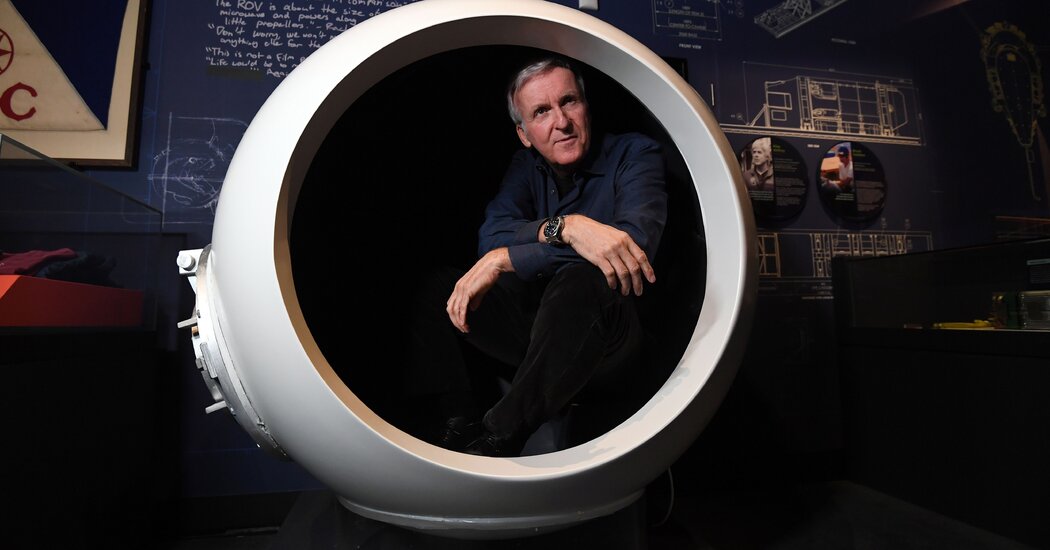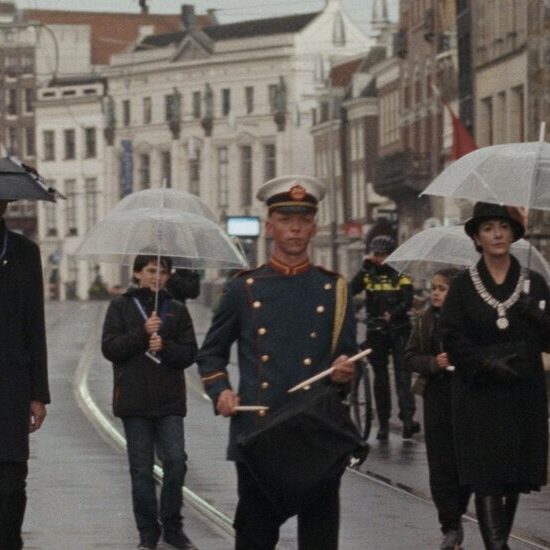
Ocean experts have long clashed over whether artifacts from the world’s most famous shipwreck should be retrieved for exhibits that could help people better understand the Titanic tragedy or whether they should be left untouched in the sea’s depths as a monument to the more than 1,500 people who lost their lives. James Cameron, known for his 1997 movie “Titanic,” sees himself as negotiating a middle path through this complicated and often emotional dispute.
Mr. Cameron dove 33 times to the shipwreck from 1995 through 2005, giving him a window on its condition and likely fate. His perspective is timely because the United States government recently sought to exert control over the wreck, raising questions about whether a company that has recovered more than 5,500 artifacts will be allowed to gather more.
Mr. Cameron’s views are also deeply personal. He often debated the retrievals with Paul-Henri Nargeolet, a French submariner who died in June while descending to the shipwreck in the Titan submersible. Mr. Nargeolet also directed underwater research for RMS Titanic Inc., the company that holds the exclusive salvage rights to the ship and its artifacts.
Mr. Cameron recently answered questions by email from The New York Times about his recovery views, the Titanic’s future and the Titan submersible. This conversation has been edited for clarity and brevity.
Did you see signs of natural decay during your 10 years of Titanic dives?
We’ve seen significant deterioration to thin-walled structures such as the deckhouse (the uppermost deck above the boat deck) and the forward mast. It was intact (in its fallen position) in 2001 but partially collapsed in 2005. New imaging by the Magellan company in 2022 shows that it has completely collapsed and broken open.
However, we’ve not seen any significant deterioration to the vast majority of the wreck, such as the hull plates. Their steel is one and a half inches thick. I believe the plates will still be standing for another two centuries at least.
How about damage by visitors? Anything obvious?
Based on my experience maneuvering around the wreck, and landing on top of it, the submersibles do nothing of significance. Up top, a submersible weighs several tons but down there, in order to fly around, it must be neutrally buoyant, which means it touches down with only a few pounds of force.
Besides, anything humans do is trivial compared to the relentless deterioration caused by biological activity, which goes on year after year. The Titanic is being eaten by living colonies of bacteria. They love it when humans drop giant piles of steel into the deep ocean, which we do with some regularity, especially in wars. It’s a feast for them.
On the Titanic’s artifacts, you describe yourself as a centrist between preservationists such as Robert D. Ballard and salvors such as Paul-Henri Nargeolet, who died in June on the Titan submersible. How so?
On one hand, I think it’s good to recover artifacts from the debris field. When Titanic broke in two at the surface, it became like two great piñatas. Over square miles, we see plates and wine bottles, suitcases, shoes — things people carried with them, touched and wore.
That humanizes the story and reminds us that the tragedy has a human face. So many artifacts have been recovered that poignantly connect us to this history — like the bell from the crow’s nest which was rung three times by lookout Frederick Fleet when he first spotted the iceberg. Now, millions of museumgoers can see it with their own eyes. I’ve even rung it myself. And there are so many examples of Titanic’s elegance — fine china, beaded chandeliers, the cherub statue from the Grand Staircase. It’s the ongoing public interest in these things that keeps the history alive, now, 111 years after the sinking.
A gray area that leaves me torn is whether we should recover artifacts from inside the bow and stern sections. One case I find compelling is recovery of the Marconi set. This wireless system sent the SOS signal that brought the rescue ship Carpathia to Titanic’s exact coordinates, and arguably saved the lives of over 700 people.
The Titanic’s wireless set was unique, very different from others in its day. I’ve flown my tiny remotely operated vehicles inside to survey the Marconi rooms, so we know where everything is and have done computer reconstructions.
But to actually put that instrument on public display would be very moving for millions of museumgoers. If it could be recovered without any harm done to the outer appearance of the wreck, I’d be in favor, because that area of the ship is deteriorating fast and within a few years the Marconi set will be buried deep inside the ruins, unrecoverable.
So anything goes?
Where I personally draw the line is changing the look of the wreck — such as raising its iconic bow (where Jack and Rose stood in the movie) or removing the mighty anchors or taking the bronze telemotor from the bridge where Quartermaster Hitchens desperately spun the ship’s wheel trying to avoid the iceberg. All these recoveries have been discussed by somebody at some point over the last quarter century. I think we shouldn’t take anything from the bow and stern sections that would disfigure them. They should stand as monuments to the tragedy.
You knew Mr. Nargeolet quite well. Did you have any disagreements with him and his company’s approach to artifact recovery?
He was a legendary sub pilot and explorer, and we spent many exciting hours going over our Titanic videos and comparing notes. He recovered many of the artifacts, such as the crow’s nest bell, that I find so moving in the various exhibits around the world.
That said, I disagreed with him about some of his plans to recover such things as the bow anchors, though it was always a friendly discussion. I’m glad some of those plans never came to fruition.
Around 2017, you joined with Dr. Ballard and the National Maritime Museum in Greenwich, London, in an unsuccessful attempt to buy the collection of Titanic artifacts and move them to Belfast, where the ship was built. Why? And would you try again if RMS Titanic once again declared bankruptcy?
Our concern at the time was that the collection could have been bought by a rich private collector and disappear from the public’s view. These artifacts belong to the world, as part of our shared cultural heritage — our collective history — and the artifacts help keep that history alive and the tragedy palpable. But only if they can be seen, and emotionally felt, through public access. If the collection is put at risk again, down the line, I would hope to have a voice in keeping it publicly accessible.
What do you make of the federal government’s recent effort to exert control over the Titanic?
The Titanic lies in international waters. I’m sure this tussle will go on indefinitely.
Do you think the Titan disaster will have an impact on Titanic visitors?
Do I believe it will stop people from wanting to witness Titanic in person? Absolutely not. Human curiosity is a powerful force, and the urge to go and bear witness with one’s own eyes is very strong for some people, myself included.
But citizen explorers must be more discerning about who they dive with. Is the sub fully certified by a recognized bureau? What is the safe operating record of the submersible company? These are the kinds of questions they need to ask.
Would you dive again?
I would get in a sub tomorrow — if it was certified, like Woods Hole Oceanographic’s storied Alvin sub, or the subs built by Triton submersibles. But there’s no rush to do anything. That familiar image of the bow will still be there, as it is, for another half century at least.













